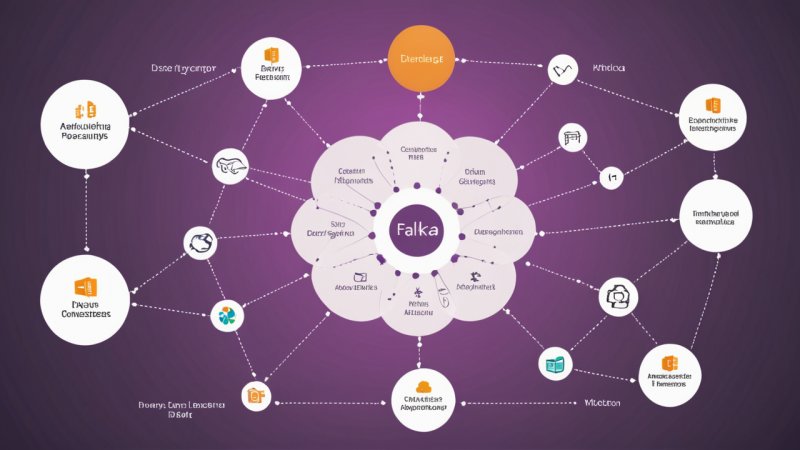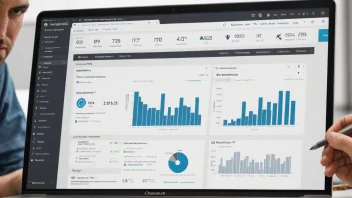In the era of big data, real-time data processing has become a critical aspect for businesses seeking to leverage data insights instantly. Open source frameworks have emerged as powerful solutions that can handle large volumes of data with minimal latency. Among these frameworks, Apache Kafka and Apache Flink stand out as two of the most popular choices for real-time data processing. In this article, we will dive deep into the comparison of Apache Kafka and Apache Flink, examining their architecture, performance, use cases, advantages, and disadvantages.
Understanding Apache Kafka
Apache Kafka is a distributed messaging system designed for high-throughput, fault-tolerant data streaming. It functions as a message broker that allows producers to send messages to topics and consumers to read them. Kafka is built on a publish/subscribe model, which makes it ideal for building real-time data pipelines.
Key Features of Apache Kafka
- Scalability: Kafka can handle thousands of messages per second, making it suitable for high-volume data processing.
- Durability: Messages are replicated across multiple brokers, ensuring data persistence even in the case of failures.
- Real-time Processing: Kafka can process data in real-time, allowing for immediate insights and actions.
Understanding Apache Flink
Apache Flink is a stream processing framework that provides high-throughput and low-latency data processing capabilities. Unlike Kafka, which is primarily a message broker, Flink is designed to execute complex event processing and stateful computations over data streams.
Key Features of Apache Flink
- Event Time Processing: Flink supports event time semantics, allowing it to handle out-of-order events effectively.
- Rich APIs: Flink offers a variety of APIs for batch and stream processing, making it flexible for developers.
- State Management: Flink maintains application state in a fault-tolerant way, allowing for complex stateful applications.
Comparison of Architecture
The architecture of Kafka and Flink is fundamentally different, serving distinct purposes in the data processing ecosystem. Kafka operates as a message broker with producers and consumers, while Flink is a processing engine that can consume data from various sources, including Kafka.
Kafka Architecture
Kafka's architecture revolves around topics and partitions. Producers send messages to a specific topic, and each topic can be divided into multiple partitions for parallel processing. This allows Kafka to scale horizontally, accommodating increased message loads.
Flink Architecture
Flink's architecture is based on a directed acyclic graph (DAG) model. Flink jobs are represented as a graph where nodes represent operations and edges represent data flow. This structure allows for complex event processing, state management, and fault tolerance.
Performance Considerations
When evaluating performance, both frameworks excel in their respective domains, but they have different strengths. Kafka is optimized for high-throughput messaging, while Flink focuses on low-latency processing of streaming data.
Kafka Performance
Kafka can handle millions of messages per second, making it ideal for applications requiring high throughput. It achieves this performance through efficient data storage and replication mechanisms.
Flink Performance
Flink provides low-latency processing and can achieve sub-second processing times for streaming data. Its ability to manage state efficiently allows it to maintain performance even with complex computations.
Use Cases
Choosing between Kafka and Flink often depends on the specific use case and requirements of the application.
When to Use Kafka
Kafka is best suited for:
- Real-time data ingestion from various sources, such as IoT devices and web applications.
- Building event-driven architectures where decoupled services communicate via events.
- Log aggregation and streaming analytics.
When to Use Flink
Flink is ideal for:
- Complex event processing where the order of events is crucial.
- Real-time analytics requiring stateful computations.
- Streaming applications that need to maintain application state across failures.
Pros and Cons
Both Apache Kafka and Apache Flink have their advantages and disadvantages that should be considered when selecting a framework for real-time data processing.
Pros of Kafka
- High throughput and scalability.
- Durable message storage with fault tolerance.
- Simplicity in setup and operation.
Cons of Kafka
- Limited support for complex processing and state management.
- Latency can increase with higher throughput.
Pros of Flink
- Rich support for complex event processing and stateful computations.
- Low-latency processing capabilities.
- Advanced windowing and time handling features.
Cons of Flink
- More complex to set up and manage compared to Kafka.
- Higher resource consumption for state management.
Conclusion
In conclusion, both Apache Kafka and Apache Flink are powerful open source frameworks for real-time data processing, each with its own strengths and weaknesses. Kafka excels in high-throughput messaging and simple data streaming applications, while Flink shines in scenarios requiring complex event processing and stateful computations. The choice between the two should depend on the specific needs of your application. If you need a robust messaging system, Kafka is the way to go. However, if your focus is on advanced data processing with low latency, Apache Flink is the better option.






